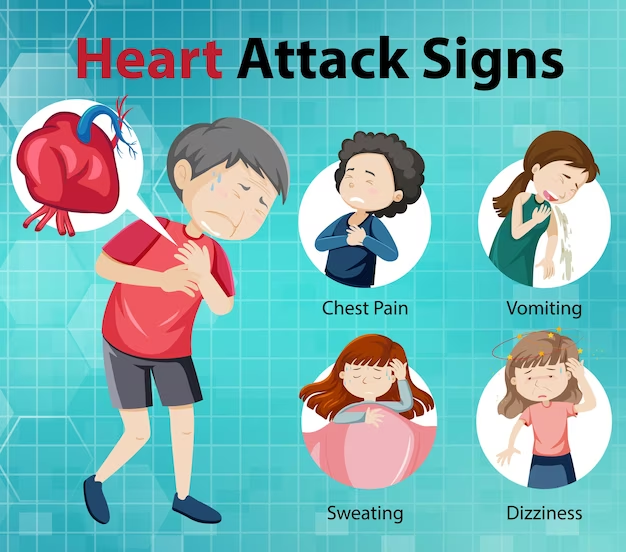Amenorrhea (absence of menstrual period ; All you should know about it
Amenorrhea is a medical condition characterized by the absence of menstruation, defined as missing one or more menstrual periods. Amenorrhea is a normal feature in prepubertal, pregnant, and postmenopausal females. In females of reproductive age, diagnosing amenorrhea is a matter of first determining whether pregnancy is the etiology. In the absence of pregnancy, the challenge is to determine the exact cause of absent menses. It can be a source of concern and discomfort for those affected, impacting both physical and emotional well-being.
Menstruation ;
The menstrual cycle is an orderly progression of coordinated hormonal events in the female body that stimulates growth of a follicle to release an egg and prepare a site for implantation if fertilization should occur. If there’s no pregnancy that cycle, shed female uterine lining. That shedding is called period. There are many factors that can affect female period including issues with the following organs and structures:
- Hypothalamus ; Controls the pituitary gland, which affects Ovulation ( releasing an egg).
- Ovaries ; Store and produce the egg for ovulation and the hormones estrogen and progesterone .
- Uterus ; Responds to the hormones by thickening the uterine lining. This lining sheds as menstrual period if there’s no pregnancy.
Types of Amenorrhea ;
Primary Amenorrhea: Primary amenorrhea occurs when a girl does not start her menstrual periods by the age of 16, in the presence of normal growth and secondary sexual characteristics. If by age 13 menses has not occurred and the onset of puberty, such as breast development, is absent, your healthcare provider should start workup for primary amenorrhea . Common causes include genetic factors, anatomical abnormalities, and hormonal imbalances.
Secondary Amenorrhea: Secondary amenorrhea refers to the cessation of menstruation in women who previously had regular periods. Potential causes encompass pregnancy, stress, extreme weight loss or gain, thyroid disorders, and polycystic ovary syndrome (PCOS).
 |
| Primary Amenorrhea |
 |
| Secondary Amenorrhea |
Causes ;
Natural amenorrhea : Pregnancy, Breastfeeding and Menopause .
Hormonal Imbalances: Hormonal disruptions, such as those caused by thyroid disorders, polycystic ovary syndrome (PCOS), and pituitary gland problems, can result in amenorrhea.
Stress and Emotional Factors: High levels of stress, anxiety, or emotional trauma can impact the hypothalamus, disrupting the menstrual cycle.
Extreme Weight Changes: Rapid weight loss or excessive weight gain can affect hormonal balance and lead to amenorrhea.
Contraceptives : Some people who take birth control pills (oral contraceptives) may not have periods. Even after stopping birth control pills, it may take some time before regular ovulation and menstruation return.
Medications : Antidepressant , Antipsychotic medications , blood pressure medicines, Cancer chemotherapy, Allergy medications .
Excessive Exercise : Women who participate in activities that require rigorous training, such as ballet, may find their menstrual cycles interrupted. Several factors combine to contribute to the loss of periods in athletes, including low body fat, stress and high energy expenditure.
 |
| Causes |
Risk Factor ;
Risk factors for amenorrhea include:
- Family history of amenorrhea or early menopause.
- Genetic or chromosomal condition that affects your ovaries or uterus.
- Obesity or being underweight.
- Eating disorder.
- Over-exercising.
- Poor diet.
- Stress.
- Chronic illness.
Symptoms of amenorrhea ;
The main symptom of amenorrhea is the absence of menstruation. Other symptoms may vary depending on the underlying cause. Some common symptoms include:
- Hot flashes
- Night sweats
- Vaginal dryness
- Acne
- Excess hair growth on the face and body
- Breast tenderness
- Headaches
- Mood swings
- Difficulty sleeping.
 |
| Symptoms |
Complications ;
It has various complications, especially if left untreated or if it results from an underlying medical condition. Here are some potential complications associated with amenorrhea :
Infertility: Amenorrhea, particularly when caused by conditions like polycystic ovary syndrome (PCOS) or hypothalamic amenorrhea, can significantly reduce the chances of conception and pregnancy.
Osteoporosis: Prolonged amenorrhea, especially if it occurs during the peak bone-building years of adolescence and early adulthood, can lead to decreased bone density and increase the risk of osteoporosis, making bones more susceptible to fractures.
Cardiovascular Issues: Hormonal imbalances associated with amenorrhea, especially in cases like PCOS or premature ovarian failure, can increase the risk of cardiovascular problems, such as high blood pressure and abnormal lipid profiles.
Uterine Issues: In cases of amenorrhea due to anovulation (lack of ovulation), there may be an increased risk of uterine conditions, including endometrial hyperplasia, which can potentially lead to endometrial cancer.
Psychological and Emotional Impact: The emotional and psychological impact of amenorrhea can be significant. Women may experience distress, anxiety, and depression due to fertility concerns, body image issues, or the underlying causes of amenorrhea, such as eating disorders.
Hormonal Imbalances: Amenorrhea is often linked to hormonal imbalances, which can affect various aspects of health, including mood, energy levels, and overall well-being.
Metabolic Changes: Some conditions leading to amenorrhea, like PCOS and hypothalamic amenorrhea, can be associated with insulin resistance and metabolic syndrome, which increase the risk of type 2 diabetes.
Adverse Effects on Reproductive Organs: In some cases, the absence of menstruation may be due to structural issues or tumors in the reproductive organs. These conditions may require surgical intervention and can have associated complications.
Impact on Quality of Life: The absence of menstrual cycles can affect a woman's sense of femininity and may lead to social and emotional challenges, impacting overall quality of life.
Hormone Replacement Therapy Risks: In cases where hormone replacement therapy is used to treat amenorrhea, there may be associated risks, such as an increased risk of blood clots, depending on the type of hormones used and individual factors.
Diagnosis ;
Healthcare provider will perform a pelvic exam to check for any problems related to reproductive organs. If never had a period, healthcare provider may examine your breasts and genitals to see if you're experiencing the normal changes of puberty.
Tests ;
- Pregnancy test .
- Blood test : To check hormones level along with thyroid and adrenal gland disorder.
- Genetic testing : to look for primary ovarian insufficiency and 40 or younger age group .
- MRI : If suspecting a defect in pituitary gland.
- Ultrasound : To rule out any pathology in ovaries or uterus .
Management ;
The treatment for amenorrhea will vary depending on the underlying cause. Once your healthcare provider has identified the cause, they can recommend the best course of treatment for you.
If you are pregnant or breastfeeding, amenorrhea is normal and no treatment is necessary. If you are taking birth control pills or other hormonal contraceptives, your healthcare provider may recommend changing your method of birth control or stopping contraception altogether.
For other causes of amenorrhea, treatment may include:
- Weight loss or gain
- Changes in exercise habits
- Stress management
- Hormone therapy
- Medication
- Surgery
 |
| Management |
Conclusion ;
Amenorrhea can be a distressing condition, but it is important to remember that it is usually treatable. If you are experiencing amenorrhea, see your doctor to determine the underlying cause and get the appropriate treatment.
In addition to the above, here are some other important things to keep in mind about amenorrhea:
Amenorrhea can increase your risk of osteoporosis, a condition that causes weak and brittle bones. It is important to talk to your doctor about ways to reduce your risk of osteoporosis, such as taking calcium and vitamin D supplements and exercising regularly.
If you are trying to get pregnant and you have amenorrhea, it is important to see a doctor to determine the underlying cause and get the appropriate treatment.
If you have amenorrhea, it is important to talk to your doctor about your concerns and to get support from your loved ones. Amenorrhea can be a challenging condition, but it is important to remember that you are not alone.
 |
https://rumble.com/v3l8qns-treatment-of-amenorrhea.html
https://rumble.com/v3l92ld-no-period-what-is-amenorrhea-top-causes-of-missing-your-period.html






Comments
Post a Comment